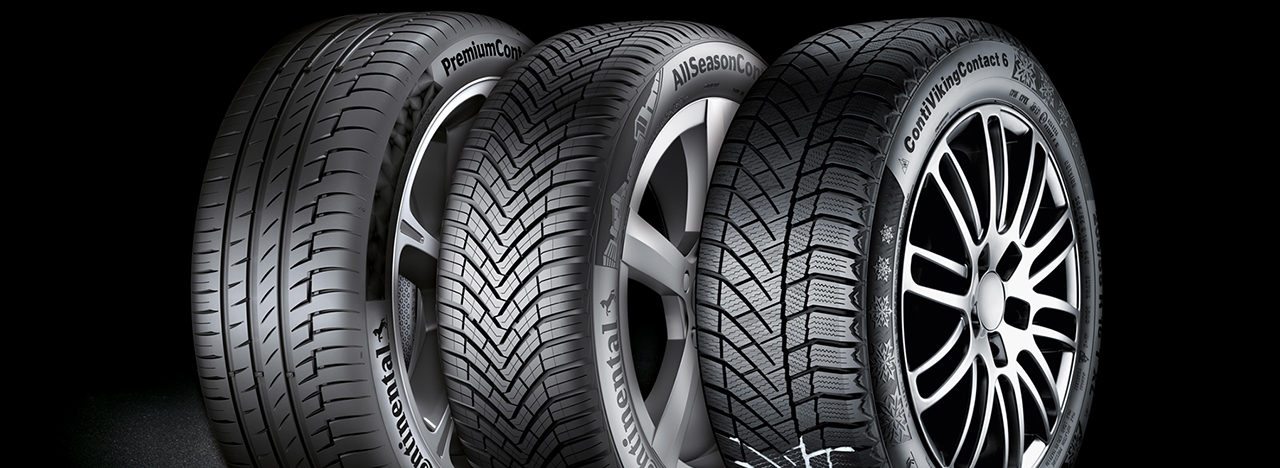
# Tyre Change and Fitting
Fitting tyres
How a tyre is fitted
Congratulations, you've got yourself a new set of tyres. Fitting new tyres to the wheels of your car is a straightforward process when done correctly and safely by a qualified professional. In this section, we explain what this process entails at your local tyre shop or garage.
Who can fit tyres?
Objectively speaking, you could attempt to do this yourself. In addition to your new tyres, the tools required would be a tyre iron, a car jack, jack stands, a tyre spreader, and a tyre inflator. But even if you do have the proper tools and equipment at hand, it will take you far longer to fit new tyres than it would a professional. Just removing a single tyre from a wheel can be a challenge.
About the dangers of faulty fitting
An incorrectly fitted tyre can become damaged and burst. The energy released in a blow-out could lead to traffic accidents involving vehicle damage and serious personal injury. That's why it's essential to have tyres fitted by an experienced technician, who will take the necessary precautions and use only approved fitting tools and lubricants.
Removing the wheel from the vehicle
Step 1: The car should be empty of passengers, with the engine turned off and the handbrake engaged. The tyre fitter will proceed to loosen the wheel nuts on all four wheels with a wheel wrench, but won't remove them yet.
Step 2: Next, the car will be raised on a hydraulic lift, so that all four wheels are completely off the ground.
Step 3: Now the fitter will remove the wheel nuts completely, allowing them to remove each wheel.
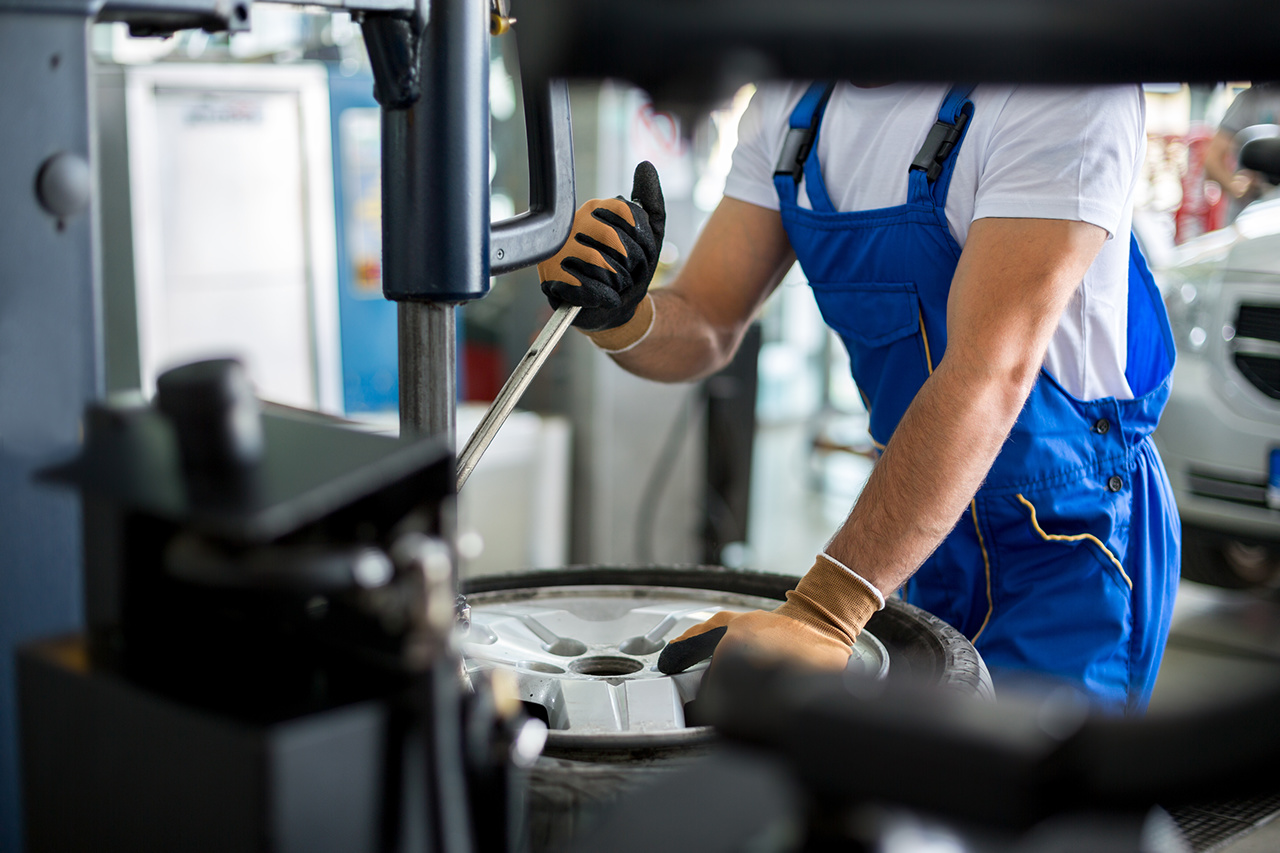
Fitting the tyre to the wheel
Step 1: The fitter will unscrew and remove the valve insert from the old tyre, to release the inflation pressure. Once all the air has escaped, they will remove the old tyre from the wheel rim using a special tool called a tyre spreader. It enables them to move the tyre sidewall and bead clear of the rim.
Step 2: The diameter of the new tyre should match the diameter of the rim, and it should be approved for use with the vehicle. Rims should be the correct size, in perfect condition, and free of rust. They must not be damaged, deformed, or worn.
Step 3: When fitting tube-type tyres, the tyre fitter will opt to use new inner tubes. That's because tubes stretch in use, and there's a risk of folds forming in old tubes; a recycled inner tube could suddenly tear.
Alternatively, if tubeless tyres are being fitted, they should always be equipped with new valves. If using rubber valves for tubeless tyres – sometimes known as snap-in valves – the vehicle manufacturer's instructions should be referred to in the first instance. For certain tyre specifications, a valve support is also necessary; this is a stopper on the rim itself or the hubcap, which ensures that valves are not forced off at high speeds.
Step 4: Moving on to the tyre beads, the fitter will coat the beads and the rim with fitting lubricant as recommended by the tyre manufacturer. Then they will use the tyre spreader to mount the tyre onto the wheel.
Step 5: Next comes the inflation of the tyre. For the duration of this stage, the wheel must remain firmly secured on a mounting machine. Inflating an unsecured tyre is dangerous. The fitter will be aware of this; it's also why they keep a reasonable distance from the tyre during inflation. Typically, they will use a sufficiently long, secured extension hose with an integrated pressure gauge, and they won't be bending over the tyre as it fills up with air.
Step 6: Once the beads of the tyre are seated correctly on the shoulder of the rim, the fitter will increase the tyre pressure to achieve a firm grip on the flanges of the rim. This fitting pressure shouldn't exceed more than 150% of the maximum pressure recommended by the manufacturer or be greater than 4.0 bar. Next, the fitter will adjust the pressure to the operating pressure as specified by the vehicle manufacturer.
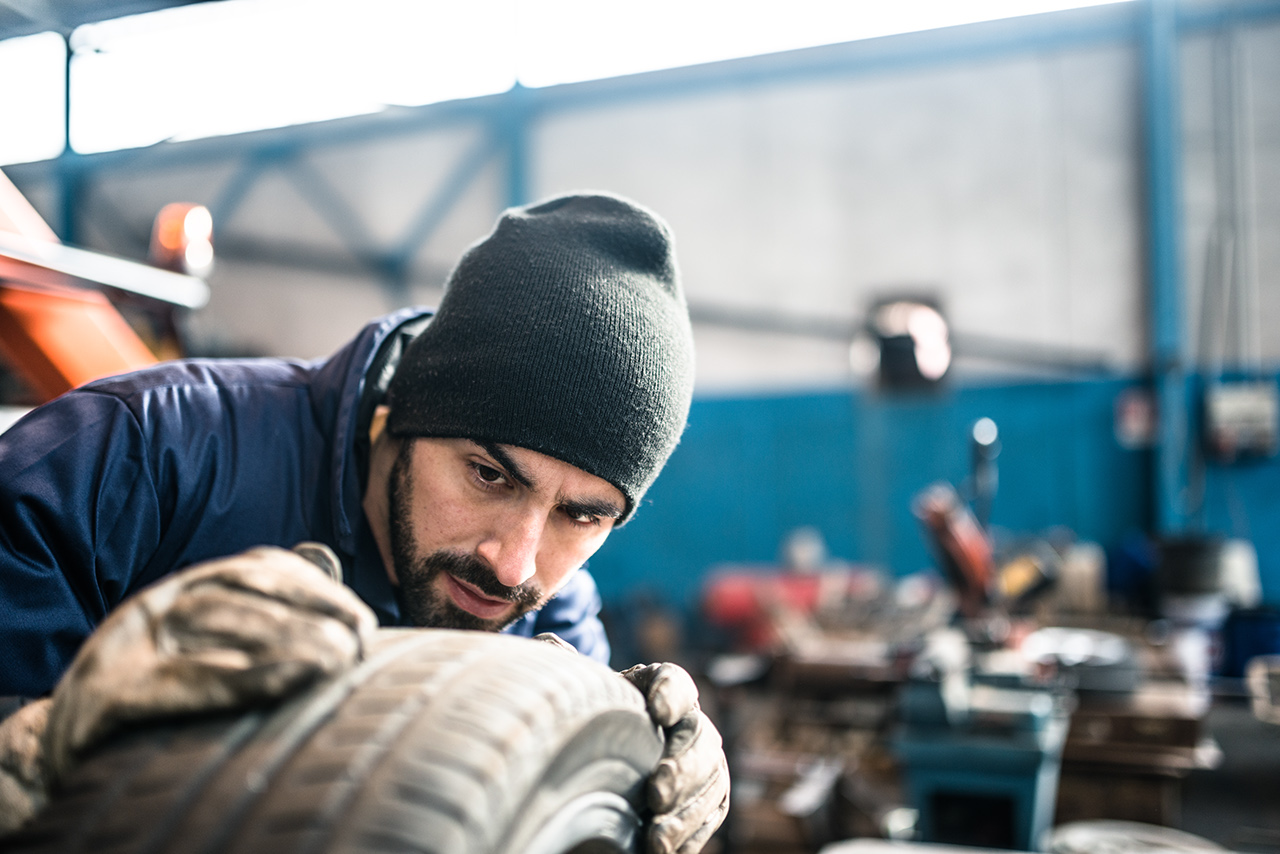
Check the direction of tread patterns
Directional tyres must rotate in the direction of the arrow on the sidewall as the wheel rolls forward.
The only exception to this rule concerns the short-term use of a spare tyre. But drivers should revert to the specified fitted position at the earliest opportunity.
In case of asymmetrical tyres, fitment must be with the sidewall "outside" on the outside of the vehicle, so their asymmetrical treads can achieve optimal effect.
Fitting the wheel to the vehicle
Step 1: If the old tyre shows signs of uneven wear, then the fitter will check the axle geometry of the car and make corrections if necessary.
Step 2: Valves should be fitted with valve caps – ideally with a sealing ring – to protect the delicate valve inserts and the inside of the tyre.
Step 3: When mounting wheel caps and wheel trim rings, the fitter will ensure that there is sufficient clearance for the sidewall of the tyre. The wheel cap or wheel trim ring mustn't come into contact with the tyre under any circumstances, especially for tyres with rim protection flanges.
Step 4: After tightening the wheel nuts by hand, the fitter will lower the car to the ground with the hydraulic lift.
Step 5: Finally, once the car is on the ground, they will tighten the wheel nuts more firmly in a star pattern.
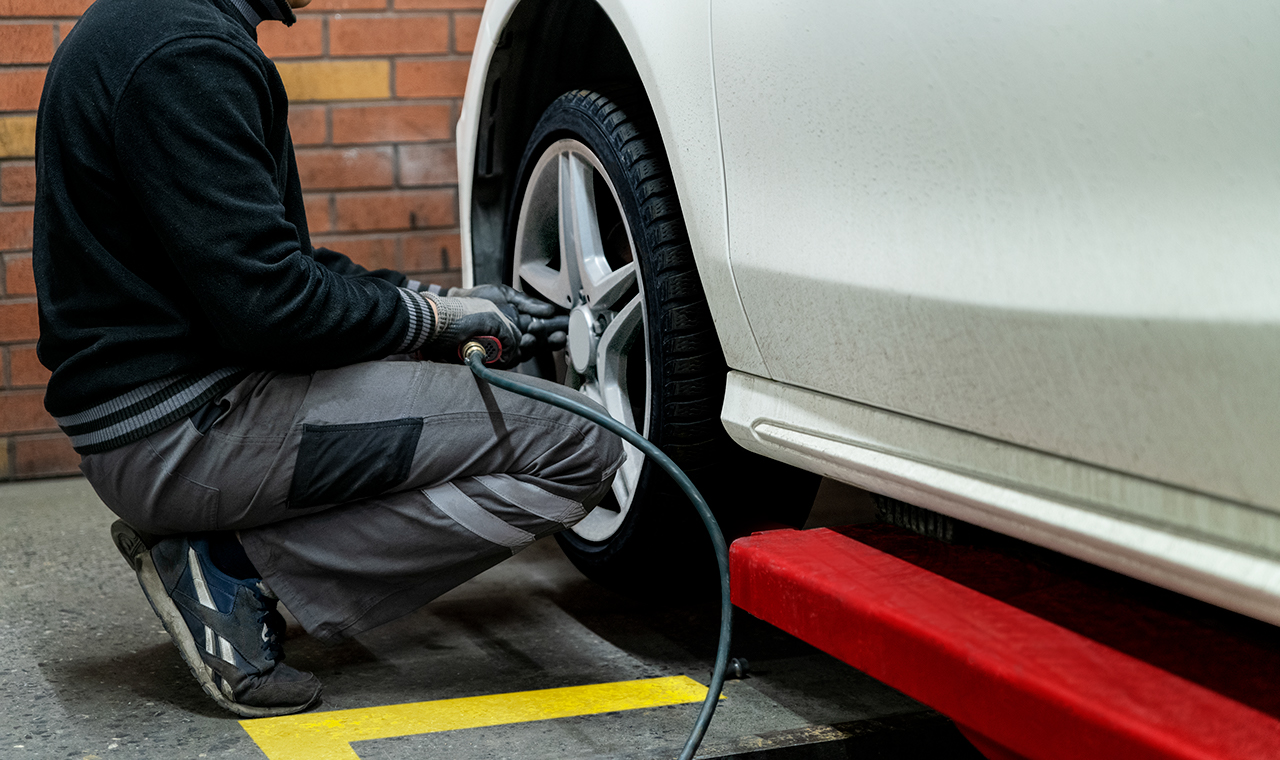
Costs of fitting tyres
If you were to visit a tyre retailer to fit your new tyres – and we recommend that you do – the cost can vary depending on your requirements. You could buy a new set of tyres from a retailer and have them fitted at the same time. Or your fitter may notice that the car requires additional work if your old tyres are exhibiting unusual signs of wear and tear.
Perhaps the most cost-effective approach in the long-term, especially when it comes to switching between summer and winter tyres, would be to buy a complete set of tyres and wheels together. That way, you can bring your tyre and wheel package to your local garage for a simple switchover when the seasons change. For a small fee, your garage may even store your alternate set of wheels for you when they're not in use.
Related content
-
 2025/07/29Continental recommends fitting tyres with the same brand, size, tread pattern, load index, and speed rating to every wheel position on your car.Mixing tyresRead more
2025/07/29Continental recommends fitting tyres with the same brand, size, tread pattern, load index, and speed rating to every wheel position on your car.Mixing tyresRead more -
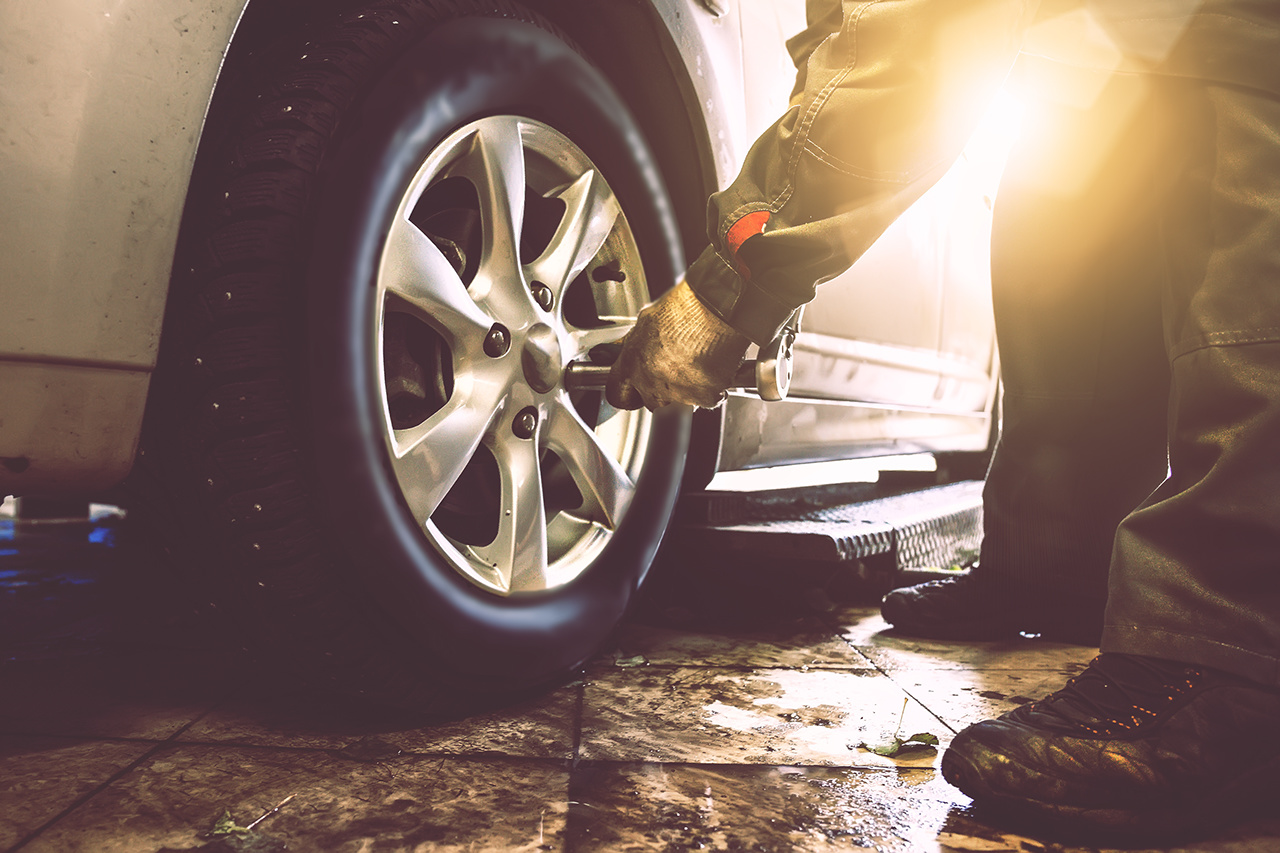 2025/07/29The seasons change, so why not the tyres on your car? We explain how a driver should choose between summer tyres, winter tyres, or all-season tyres.Changing tyresRead more
2025/07/29The seasons change, so why not the tyres on your car? We explain how a driver should choose between summer tyres, winter tyres, or all-season tyres.Changing tyresRead more -
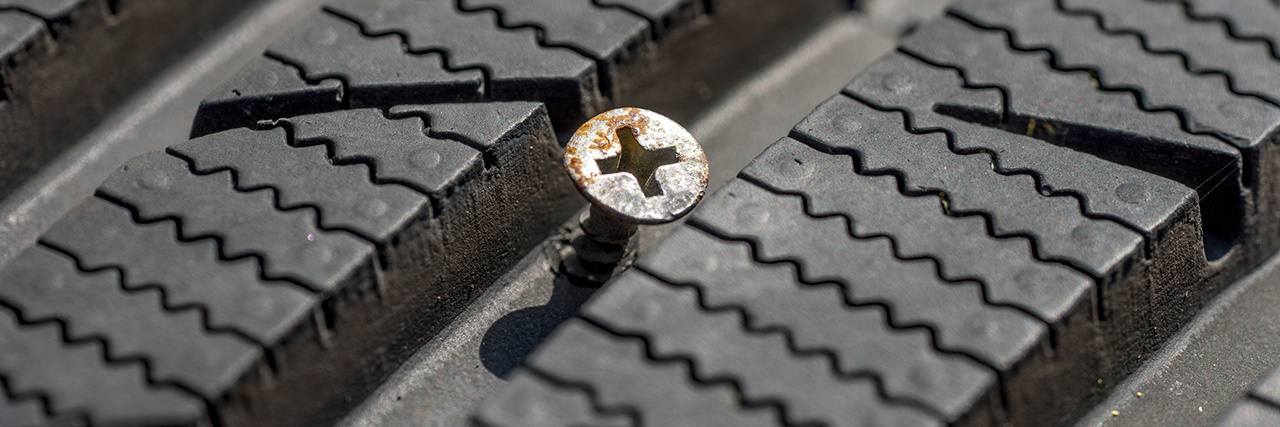 2025/07/29Want to repair a tyre puncture? Drivers must know whether a repair on a flat tyre is legally permissible, or whether they have to buy a new tyre instead.Tyre repairRead more
2025/07/29Want to repair a tyre puncture? Drivers must know whether a repair on a flat tyre is legally permissible, or whether they have to buy a new tyre instead.Tyre repairRead more